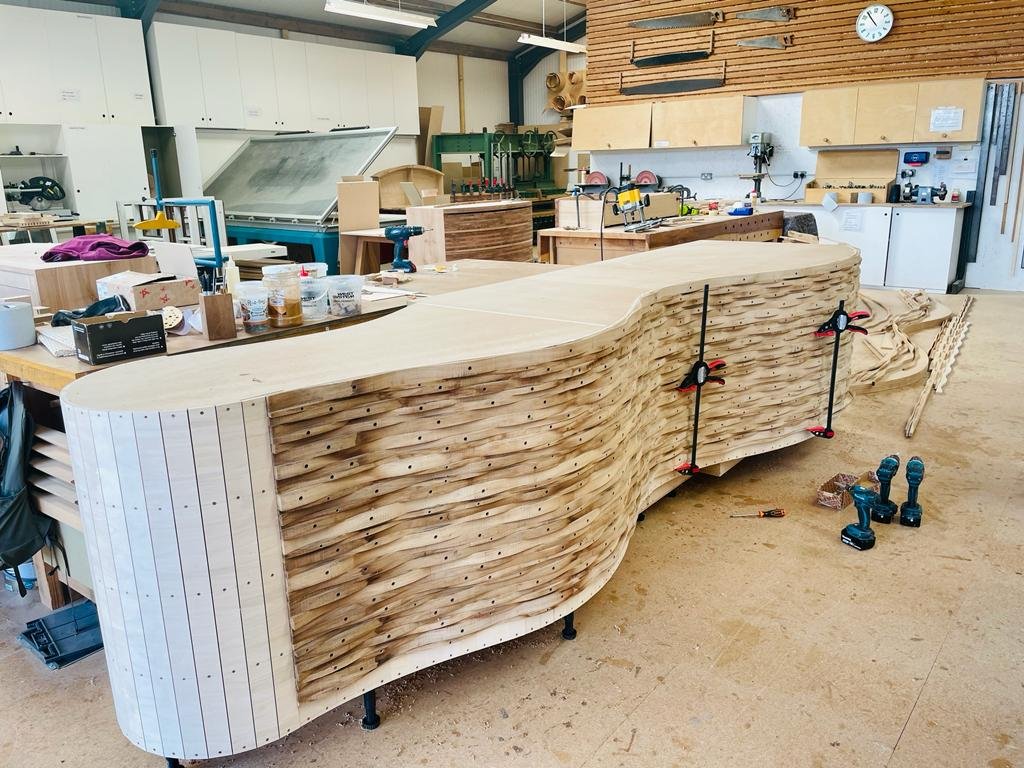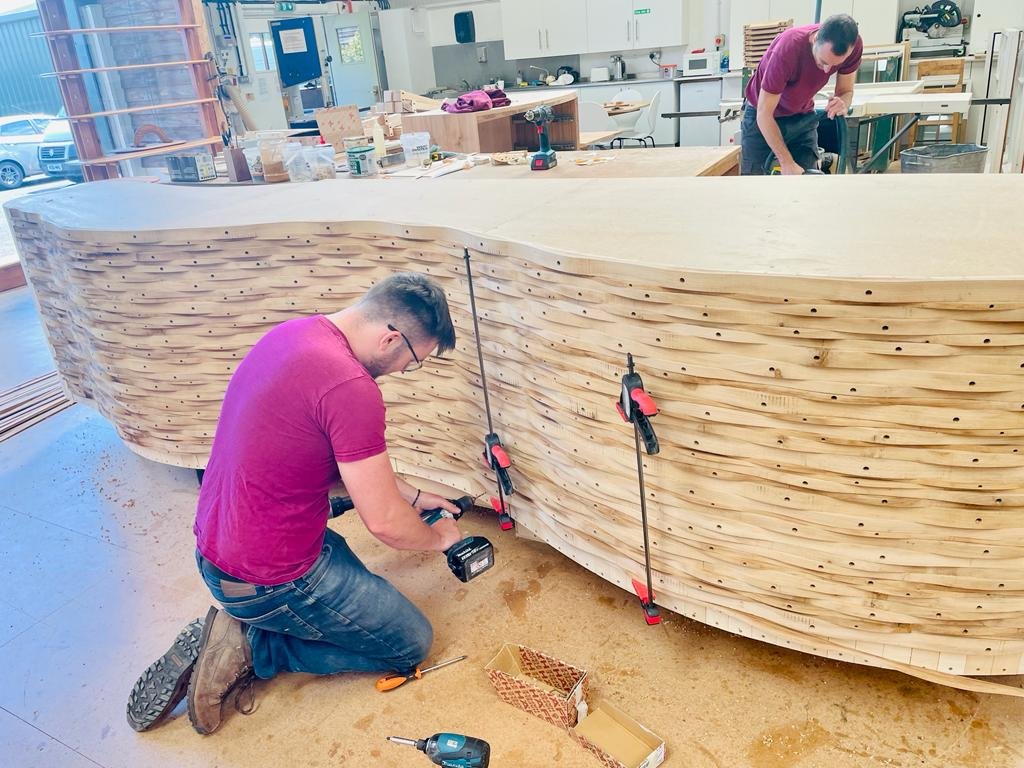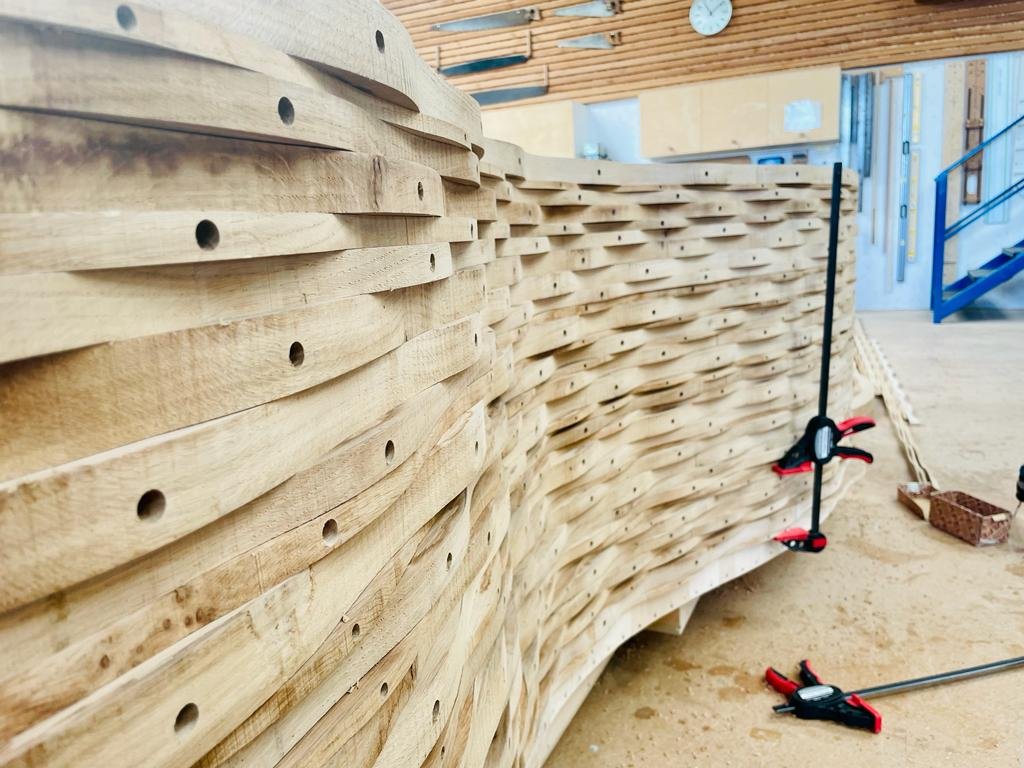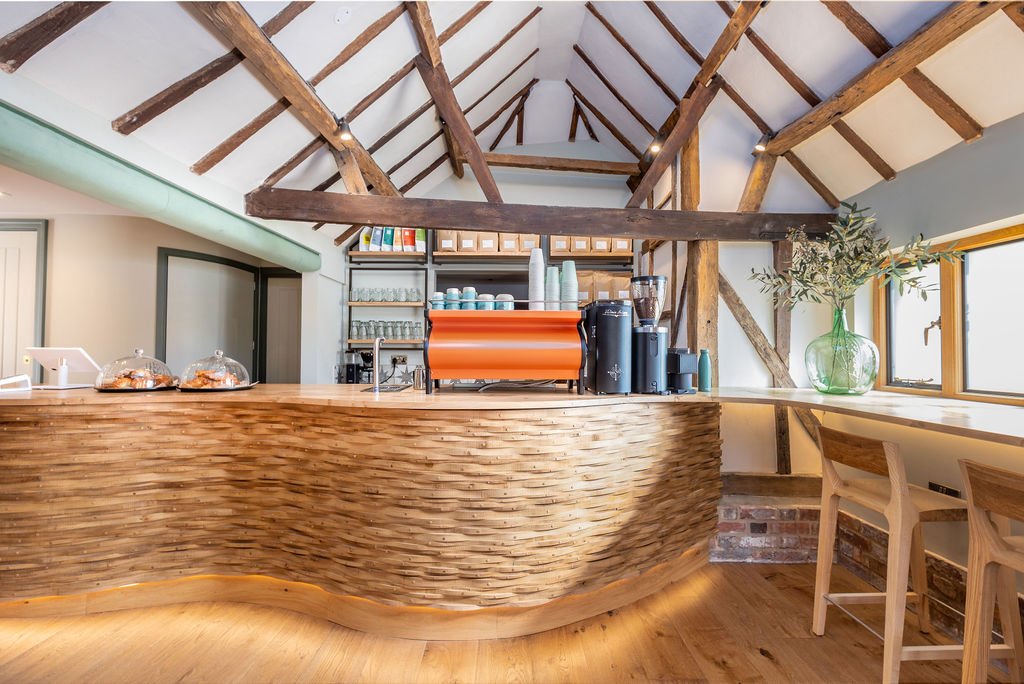Matthew Burt Furniture
/What was your vision for Matthew Burt when you first started the business?
To design and make modern English furniture, that spoke of its time and contributed to design evolution. Above all I wanted to design and make furniture for posterity, that was appropriate for use and that would continue to give joy, every day of that use. It needed to be both designed and made well. Celia, my wife and I started the business in 1978 and we both shared the lofty ambition of wanting to contribute to the local economy and eventually provide employment within it. It has to be added that my fortunate farm upbringing in Wiltshire had inculcated within me, a profound affection for trees, under which I had got up to unspeakable mischief as a child (photo of the original workshop)
What were the main challenges you faced?
Persuading people to pay enough to enable us to survive and make furniture again the next day. Designing and making modern furniture in 1970s Britain was a tad challenging. We soon realised that we had to design, make, administer, market and sell our furniture. Each discipline had to be delivered with the same commitment, creativity, acumen and panache as the discipline we liked. A tall order for two. We soon realised we needed a solid team.
Where did you get the inspiration for your pieces?
I glibly say that I met my design mentor at university whilst studying Botany and Zoology, long before I harboured any desire to design and make. This mentor was ruthlessly hard, uncompromising, exacting and succinct…. It was Natural Selection. If anyone can let me know of a better organ for realising flight than a feather, I would be fascinated to know. To bring this grandiose vision down to earth, inspiration is normally a response to a design brief. Set by others in our commissioned work or by myself as is the case with our speculatively made ‘Collections’. The briefs can be loose, such as “I’d like you to liven up that space” or “create a statement piece for that alcove” They can also be fiercely exact. In the case of the Forge on the Green it was both exacting and free. Beyond the need for a serving counter that would house given equipment at the correct place and with correct services it was “do your thing”. A wonderful brief with a wonderful set of clients. I have used over a mile of graphite in my design life, the propelling pencil is my constant companion, I sketch, and sketch and sketch. I now seem to write and write and write as well.
What is your process when working with clients?
Listen, listen, visit, listen, listen, research, research, sketch, draw & visit (home or away) again. I want to supply appropriate solutions. I would always encourage potential clients to visit our showroom, studio and workshop but I also want to visit their home or the venue they’re interested in me designing pieces for. I want the piece I design and make for them to be fit for purpose, to be beyond fad or fashion, to survive the vagaries of time and to give joy in use day after day, year after year. I aim for a parity of status between, design, making and material both in our business and in fulfilling the needs of our clients.
Where do your source your materials?
I consider timber to be ‘recycled sunshine and rainwater, a gift of a material requiring only nurture and confidence in the future to be there for us. It’s a material that we, as a species, have evolved alongside. Its familiarity resonates as a companionship within us, it’s a wonderfully fascinating material that incorporates so much of what makes me tick. For every cubic meter we use we plant a tree. We aim to use local timber from as near our workshops in Wiltshire as we can. I have spent a major part of my working life ‘memorialising’ the elms that towered above my Wiltshire childhood. All, sadly died, when I was undertaking my apprenticeship in the mid-1970s. I was devastated and have sought to express their magnificence by incorporating bits of them into many of the pieces I designed and made. An increasingly tall order because elm timber has nearly all gone and is now quite rare. Again, sadly, we are now embarking upon doing the same for ash which are dying from ‘Ash Dieback’ (caused by the fungus that used to be known as Chalara but is now referred to as Hymenoscyphus fraxineus) which is rampaging through our country with alarming speed. We limit ourselves to the palette of British timbers and we are now, increasingly buying trees that have fallen locally which we plank and seasoning ourselves.
What are your thoughts with regard to using sustainable materials for your furniture
In part this was answered in my previous reply. My first degrees were in Botany and Zoology where I had an ecological attitude instilled in me. This merely built upon a farm upbringing where all practice stemmed from a concern for the health of the soil and the future of the farm/planet. From the onset of our business, we aimed to be responsible in the use of materials and this led seamlessly into our present attitude towards materials. Nearly thirty years ago I was at the first 100% Design show. On one of the evenings there was an Elle Decoration magazine special offer to its readers, they had published an article on ‘recycled’ furniture. A stream of visitors filed passed my stand muttering “Oh that’s not recycled”. The irritation got the better of me and I eventually cracked saying “But this is the ultimate recycled furniture it’s made from recycled sunshine and rainwater”. They scuttled by even quicker after that. A sustainable attitude towards our environment, production, future use and business practice has been at the forefront and was indeed one of the founding principles of our business when my wife and I started it in 1978.
What are the key things that make your business unique?
We design, make, administer, market, sell and after-sell achingly beautiful 21st-century English furniture and we do it all in Wiltshire, using timber from as close to our workshop as possible. We also aim for a parity of status between design, making and material. In order to do it, we train all our makers with a 10,000-hour, six-year, apprenticeship, aiming to get them beyond the merely analytical and into the intuitive. I was lucky enough to see both sides of education and training, with my initial degree in Natural History followed by an apprenticeship in furniture making. I didn’t pick up a furniture making tool until I was twenty-five. The contrast between the two was extraordinary. The former fed my approach, the latter an imperative insight in how to pass on skills. I became determined to do the same for all those that worked for us. We approach this without accepting any money from government because that comes with ‘government suggestions’. We fiercely protect our independence, seeing it as the core of our business. We’ll ride out the vagaries of chance and financial risk and back ourselves to remain fleet of foot enough to do so. We wish to train our makers to be the very best at what they have chosen to do, to add to the chain of specialist skills that connects them to the legacy within English furniture but also to furbish them with the knowledge that today has to offer. We proudly use tools from the biblical to the digital in order to express our aims.
What are you most proud of as a business?
This is a toss-up between the team we have become, the designs we have created and the pieces that have been out in the world, in some cases, for 44 years. I feel the greatest achievement would be the joy our furniture has given our clients. We are now in the fortunate situation of making for the children of those we originally designed and made for. Indeed, The Forge on the Green is an example of that very, very satisfying achievement.
What are the next steps for Matthew Burt?
To become better at what we do, to do so more effectively, so that we can do more of what we do, so that more of you can experience the satisfaction of living with what we have designed and made for you.

















